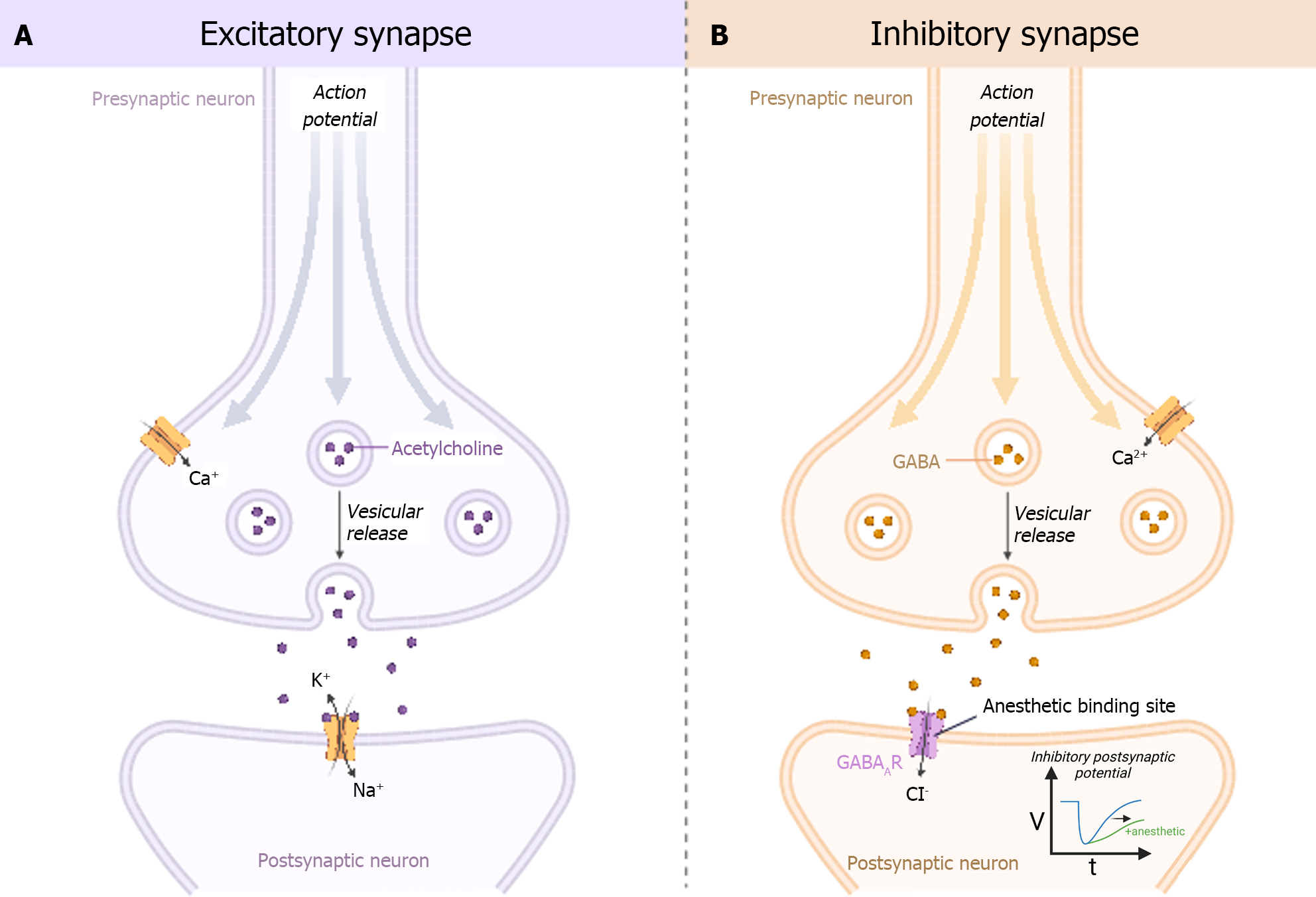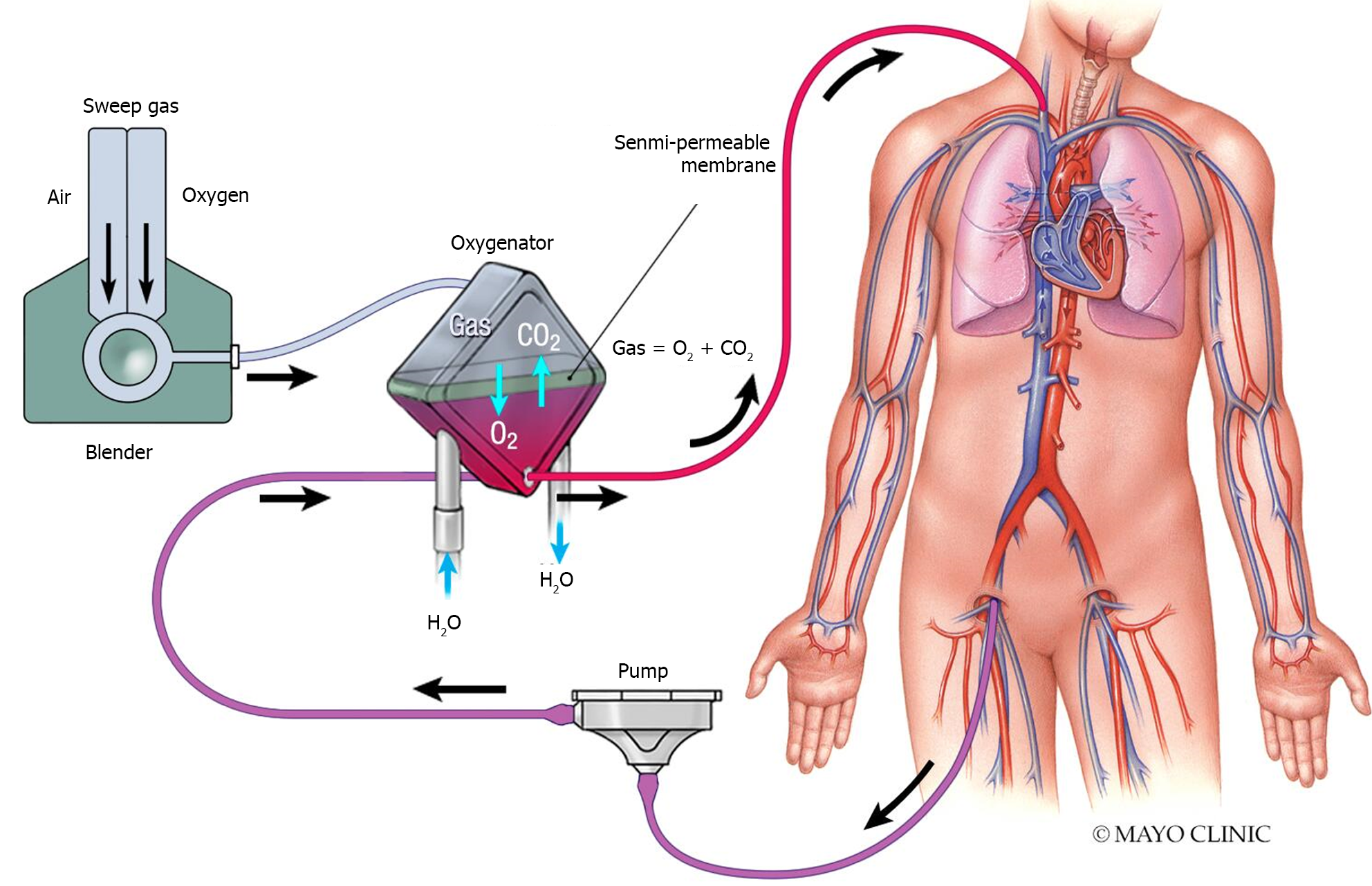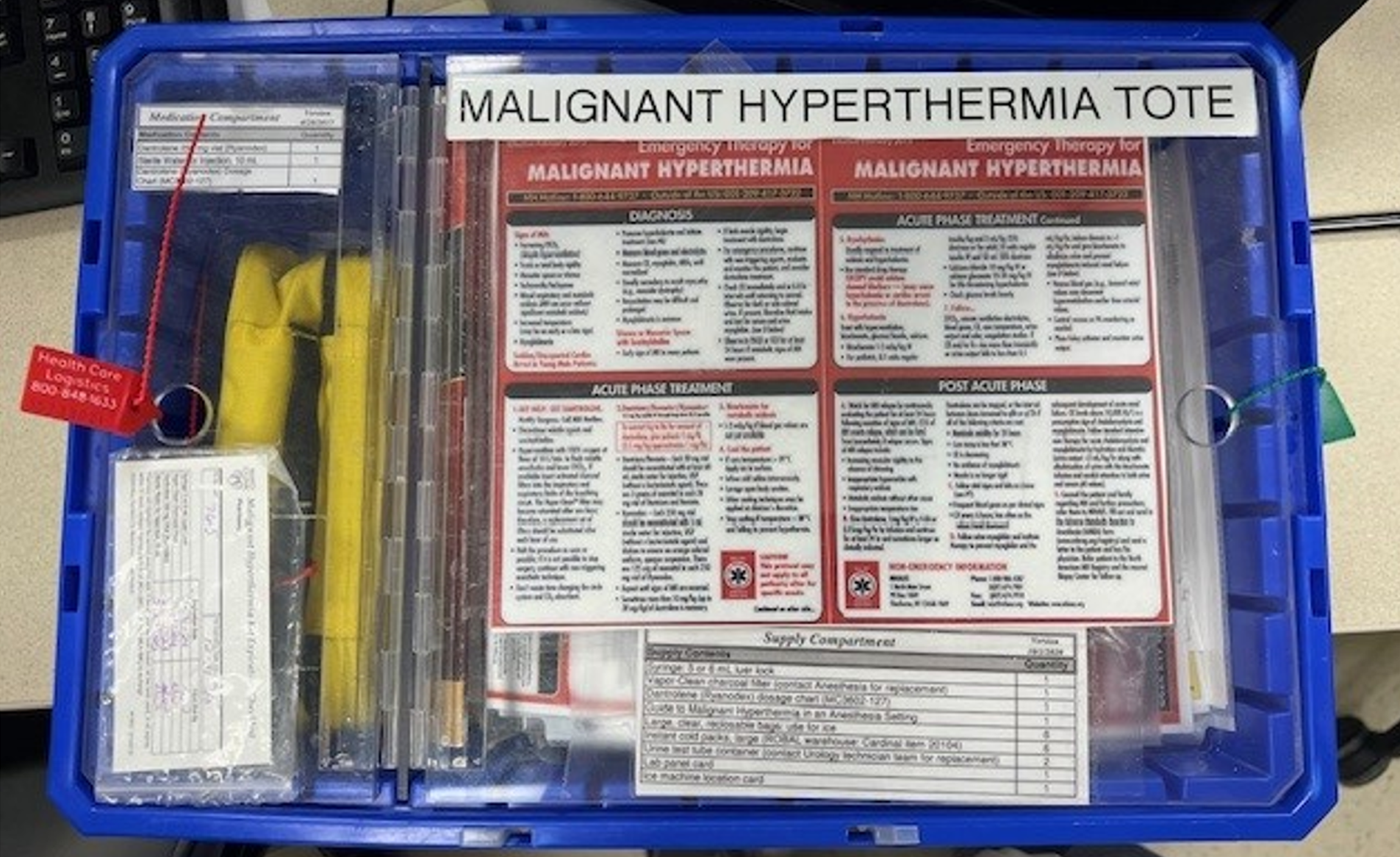Copyright
©The Author(s) 2024.
World J Crit Care Med. Mar 9, 2024; 13(1): 90746
Published online Mar 9, 2024. doi: 10.5492/wjccm.v13.i1.90746
Published online Mar 9, 2024. doi: 10.5492/wjccm.v13.i1.90746
Figure 1 Volatile anesthetic mechanism of action.
A: Excitatory neural synapse; B: Inhibitory neural synapse augmented by volatile anesthetic. Created with BioRender.com.
Figure 2 Depiction of how extracorporeal membrane oxygenation works in acute respiratory failure[17].
Citation: Wieruszewski PM, Ortoleva JP, Cormican DS, Seelhammer TG. Extracorporeal Membrane Oxygenation in Acute Respiratory Failure. Pulm Ther 2023; 9: 109-126 [PMID: 36670314 DOI: 10.1007/s41030-023-00214-2].
Figure 3 Example of a malignant hyperthermia kit for the intensive care unit.
- Citation: Wieruszewski ED, ElSaban M, Wieruszewski PM, Smischney NJ. Inhaled volatile anesthetics in the intensive care unit. World J Crit Care Med 2024; 13(1): 90746
- URL: https://www.wjgnet.com/2220-3141/full/v13/i1/90746.htm
- DOI: https://dx.doi.org/10.5492/wjccm.v13.i1.90746















